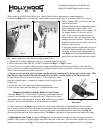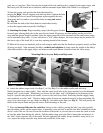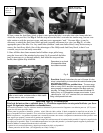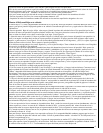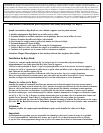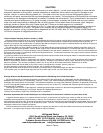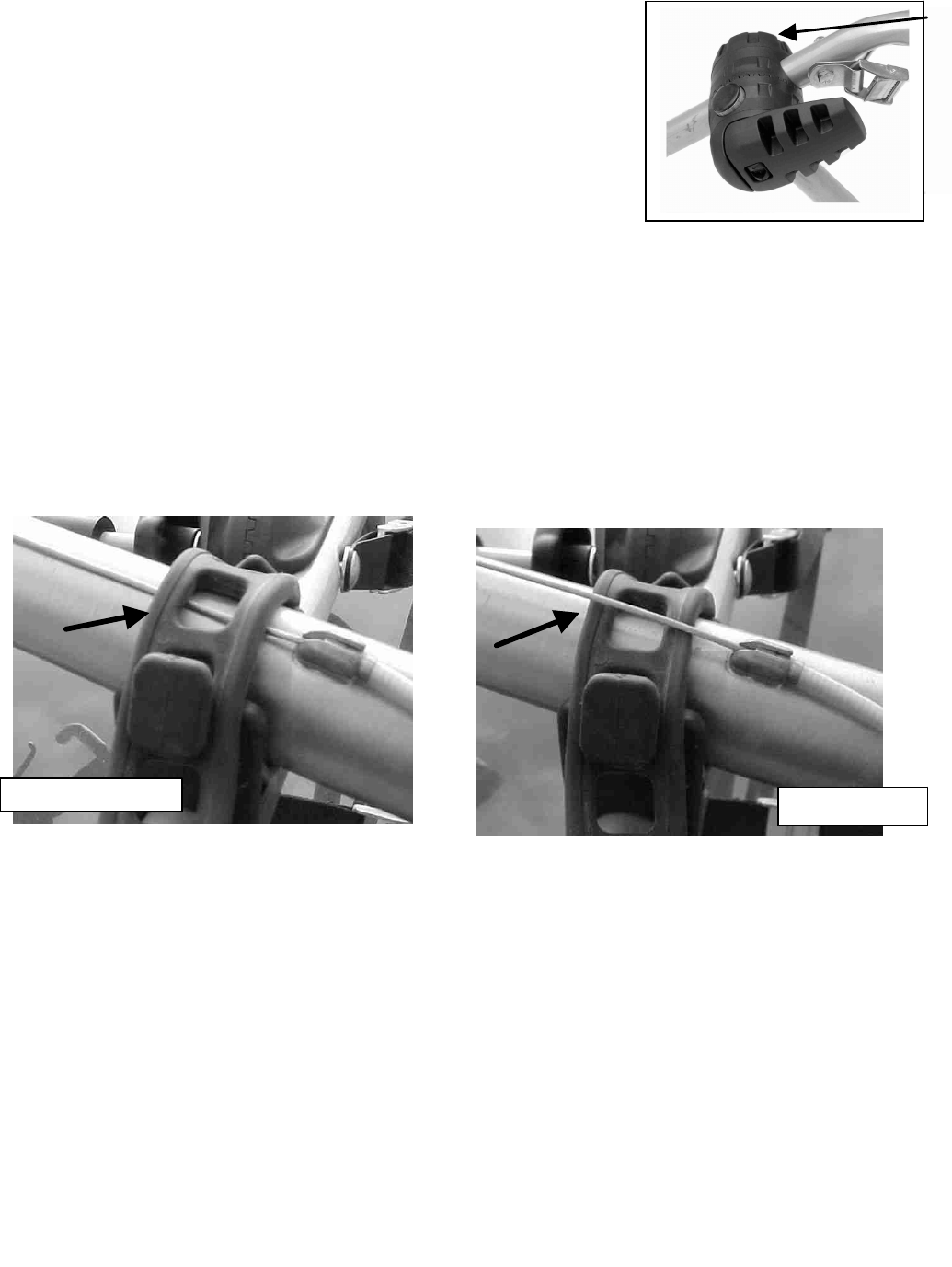
pads may rest on glass. This is because the weight of the rack and bicycles is support by the upper straps, and
the lower pads. Be careful not to interfere with rear mounted wiper blade if the vehicle is so equipped.
3. Once the proper rack position has been determined by
moving the Baja’s bicycle support arms and rear brace, tighten the hubs
by flipping black levers in and locking them in place against the rack;
then rotate the lever and/or cup until the hubs are snug and secure.
See Fig. 2b.
Be sure that the teeth of the black hubs are interlocked evenly,
so that the support arms are parallel. See Fig. 1.
4. Attaching the straps: Begin attaching straps with the upper (farthest
forward) pair, placing the hooks in the most forward trunk lid opening, and then pulling on the end of the
strap until the proper length is reached. Once the upper straps have been attached, the side and bottom straps
can be attached in any order. If your vehicle has a “soft” plastic bumper, the lower straps may be attached to
the lower edge of the trunk lid, or rear door opening instead of the bumper.
5. When all six straps are attached, pull on each strap to make sure that the hooks are properly seated, and that
all straps are tight. After mounting the bikes, recheck and retighten all straps since the weight of the bike(s)
often adds tension to the upper straps, and removes and equal amount of tension from the lower straps.
Mounting bike(s) to your Hollywood Baja rack:
6. Attach the rubber straps (total 6 for Baja 2, or 9 for Baja 3) to the rubber cradles and anti-sway
blocks (beneath every other cradle). Start with the round (end) hole of the strap stretched over the diamond
shaped “nub” on the cradle. Which hole you choose for the other “nub” will depend on the diameter of the
bicycle’s specific tube placed in the cradle, or next to the Anti-Sway block. Each strap should snuggle firmly
and completely over the “nub.” Check to make certain all straps are attached correctly before proceeding. Be
sure not to route straps over any cables (see Fig. 3.), but rather under them (see Fig. 4). This will protect the
finish on the bicycle frame and provide a more solid mounting on the rack.
7. Place the heaviest bike onto the rack first (closest to the vehicle), putting the bike’s top tube (usually)
into the rubber cradles on the support arms. It generally works out best to put the first bike’s handlebars on the
driver’s side of the car. Be sure to note the location of the pedal, as you may have to rotate the crank in order
to keep the pedal from hitting the vehicle. Pull the rubber strap across the bike’s frame tube and attach it to
the “nub” on the opposite side of the cradle for both right and left cradles. Straps should be snug, but do not
over-tighten the straps since this may shorten the useful life of the strap.
Fig. 3
Not like this!
Fig. 4 Like this!
cup
2
Fig. 2b



